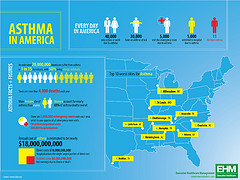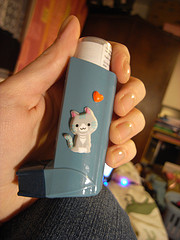
flic.kr/p/7cNP1a
Asthma is a chronic inflammatory disease that makes airways (bronchial tubes) particularly sensitive to irritants, and this is characterized by breathing difficulties.
Asthma cannot be cured, but for most sufferers, it can be controlled so that they have only minimal and infrequent symptoms and they can live an active life. Read more . . .



